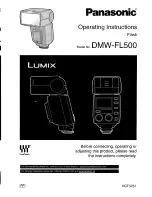
V1.02
Thom Hogan’s Complete Guide to the Nikon D300
Page 130
In computer jargon, eight bits are called a byte, and most disk
and memory storage capacities are expressed in bytes. For
example, the main memory of your computer might have
1,073,741,824 bytes (1GB) of space. The non-round number
is caused by the binary nature of computers, where everything
is expressed as a power of 2. A thousand in computer
counting turns out to actually be 1024; therefore most storage
capacities are slightly understated. CompactFlash cards used
by the D300 have storage capacities expressed in bytes, as
well.
To form one complete digital image you must store 24-bit (for
JPEG or TIFF) or 12-bit or 14-bit (for NEF) values for each
pixel. Why 24-bit for JPEG and TIFF? Remember, we need 8
bits to store each of the three primary colors for these files,
while NEF files just contain a single 12-bit or 14-bit data point
for each photosite (the remaining color information is
deciphered later). You do this in a compilation of bytes called
a file. On a D300 at its highest in-camera resolution, that
amounts to a minimum of 36,636,672 bytes of data (4288 x
2848 pixels at 3 bytes per pixel), which we’d normally just
round off and call 37MB. That means that a file containing
that image would contain a string of over 290 million
1
’s and
0
’s (actually, slightly more than that, since most file formats
require some additional information that describes the
characteristics of the data in the file).
To put that in perspective, this eBook only has a little over a
half million characters in it, so if you took every letter in this
eBook and made it into a
1
or a
0
, you’d need almost 600
eBooks just to contain the data for one image. (Puzzled by the
290 million number? Remember, there are 8 bits in a byte!)
Obviously, we’re talking about a huge amount of data. To
help deal with the storage issues all that data raises, Nikon
















































